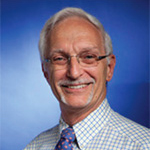
Dr. Furst
Dr. Furst said it would be wise to look for a cause of the fatigue, ESR level, tenderness and swelling other than RA—in this case, hepatitis B.
With the number of Asian Americans expected to reach 8% of the U.S. population by 2050—and that population has a higher prevalence of hepatitis B infections and downstream hepatocellular carcinoma—the resulting higher prevalence of hepatitis B in the U.S. population “is going to be a problem,” Dr. Furst said.
Studies have shown that TNF inhibitors can sometimes reactivate hepatitis B, making it a relatively inappropriate treatment choice for patients with a history of hepatitis B.1 In a study of rituximab, lymphoma patients receiving CHOP chemotherapy plus rituximab had reactivation of hepatitis B, while those receiving only CHOP did not, making rituximab a poor choice, as well.2
A small study in which Dr. Furst was involved showed that abatacept is feasible in patients with RA and chronic hepatitis B, if background therapy is used.3 He is hoping to examine this in an expanded, well-controlled study.
“For [RA patients with] hepatitis B, from my point of view, always use background therapy,” he said. “I wouldn’t use TNFi’s, but you can if you need to. Abatacept may be the best we’ve got for the moment.”
Paget’s Disease of Bone
Margaret Seton, MD, assistant professor of medicine at Brigham and Women’s Hospital and a leading expert on Paget’s disease of bone, said the disease can be debilitating, but is treatable. She worries that some physicians might not be very familiar with it because fewer cases are being seen.
The disease, first described in 1876, starts in middle age or later and involves bone enlargement and softening, with those bones that are weight-bearing becoming unnaturally curved. Complications include pain, nerve compression, fractures, metabolic disturbances, worsened quality of life and, rarely, osteogenic sarcoma.
One misconception about the disease is that it can spread. It does not, she said. When patients are first diagnosed, Dr. Seton said, it’s important to get a bone scan to define the extent of disease. “It’s very useful as you follow patients over time,” she said.
Elevated levels of alkaline phosphatase (ALP) was once considered a reliable marker of the disease, but it no longer is. A Dutch study of a general population cohort in 2004 found that 86% of those with active Paget’s actually had normal serum ALP.
Dr. Seton described this treatment regimen for an 86-year-old patient with extensive Paget’s disease of bone: 30 mg daily of risedronate given in February and March of 2006, which was minimally effective. Possible reasons for this include poor absorption of the oral drug, inadequate length of treatment or dose.
